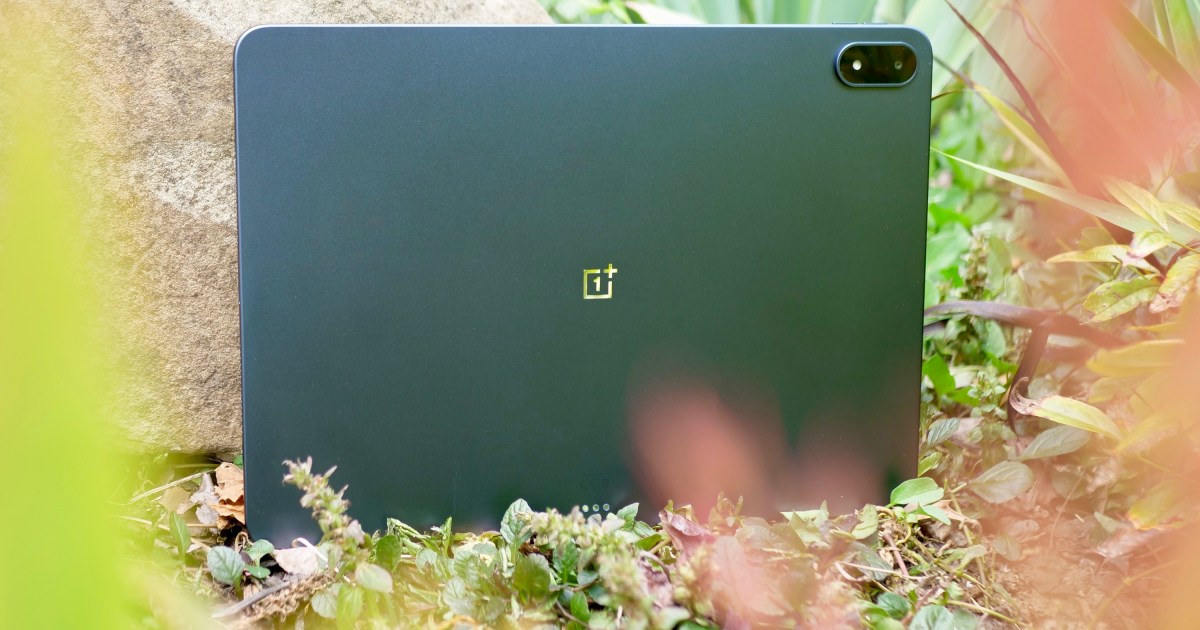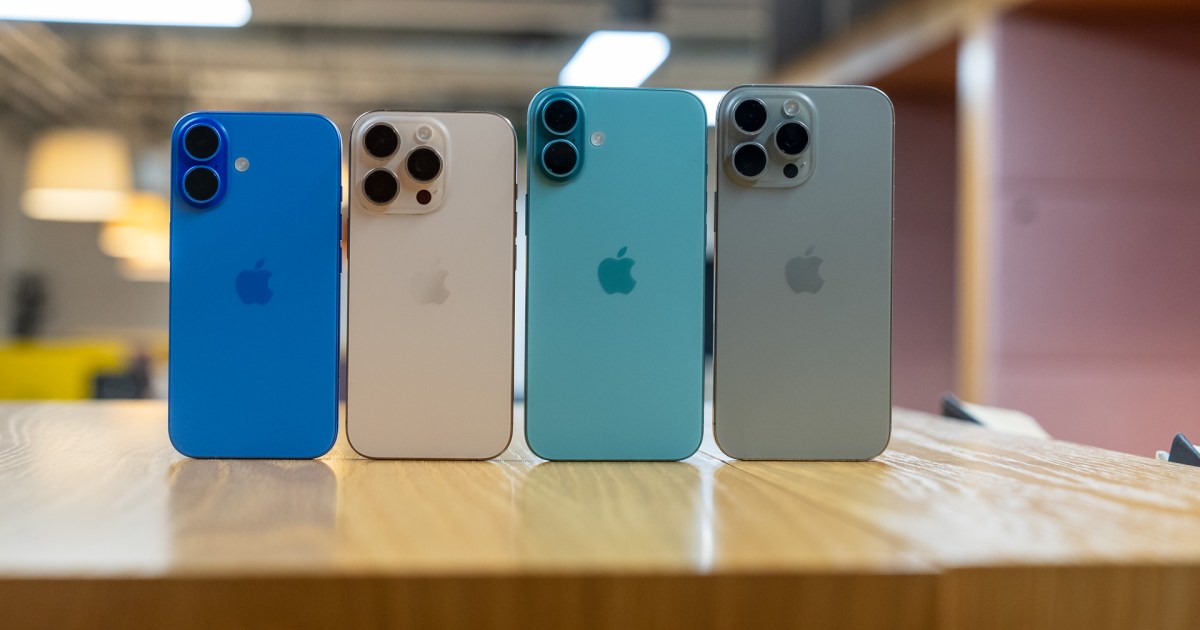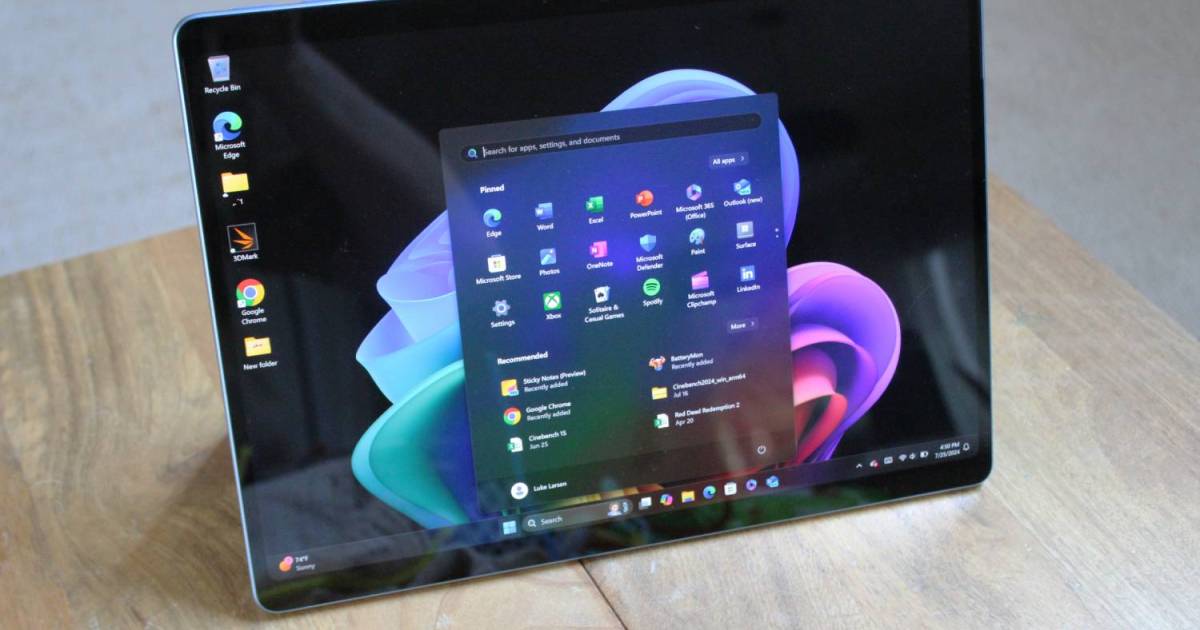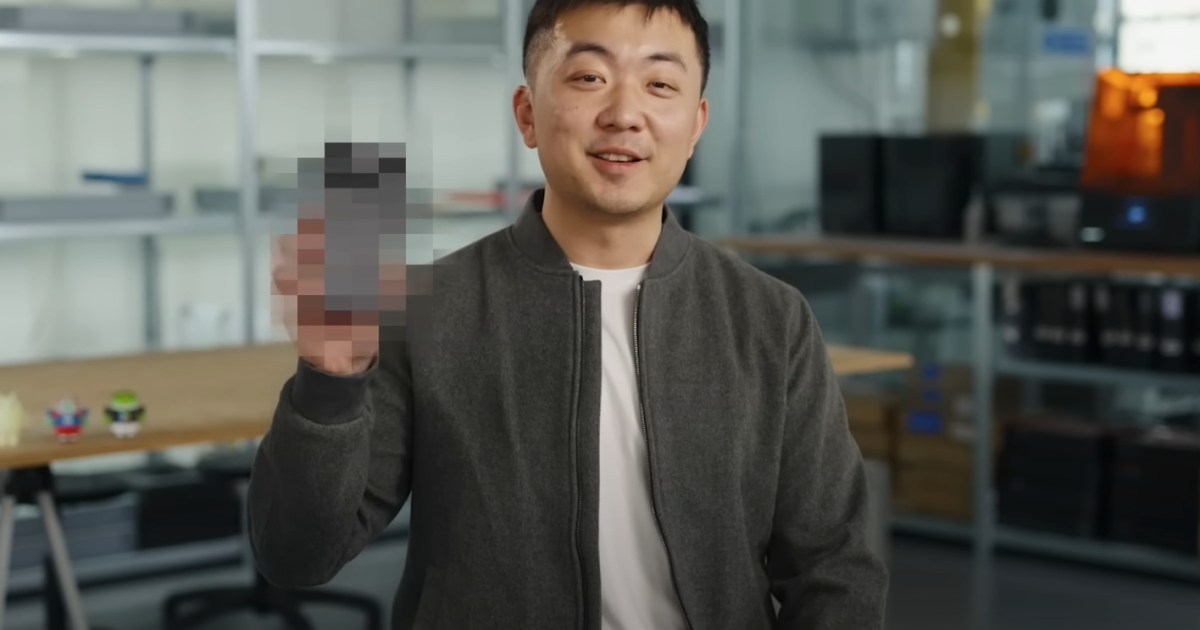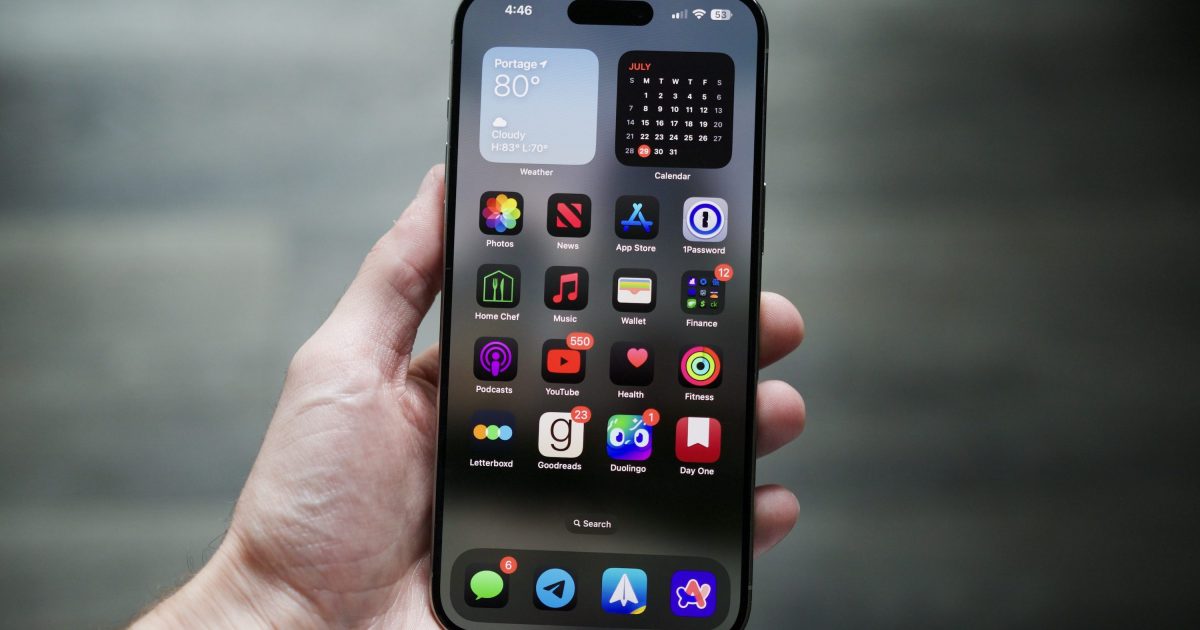OnePlus has rapidly established a commendable, albeit brief, legacy in the Android tablet market, complementing its reputation for crafting some of the [internal_link to best Android smartphones guide] available. Following the notable OnePlus Pad and its successor, the question arises: can the OnePlus Pad 3 continue this trajectory of success, building on the foundations laid by devices like the [internal_link to OnePlus 13 review] and the [internal_link to OnePlus Pad 2 review]? We’ve immersed ourselves in the OnePlus Pad 3 experience to deliver this comprehensive review. This device aims to impress with its sheer scale and processing muscle, but does it strike the right balance for prospective buyers?
| Dimensions | 289mm x 209mm x 5.97mm |
|---|---|
| Weight | 675 grams |
| Durability | N/A |
| Screen | 13.2-inch LCD, 3392 x 2400, up to 140Hz refresh rate |
| Processor | Qualcomm Snapdragon 8 Elite |
| RAM and storage | 12GB LPDDR5x/16GB LPDDR5T, 256GB/512GB UFS 4.0 |
| Camera | 13MP rear, 8MP front |
| Battery | 12,140mAh |
| Charging | 80W wired SuperVOOC |
| Software | OxygenOS 15, Android 15 |
| Colors | Storm Blue |
| Price |
OnePlus Pad 3: Design and Build Quality
The OnePlus Pad 3 adopts a more conventional aesthetic compared to the bolder design language of the OnePlus Pad 2. Its unpretentious corner-mounted camera and diminutive volume and power buttons might lack overt character, but the tablet compensates with its imposing presence. This device is undeniably huge. When paired with its keyboard accessory, it commands more desk space and is considerably less portable than my MacBook Air M1. Unlike the Apple iPad Air M2 with its keyboard, the OnePlus Pad 3 struggles to fit into a standard everyday bag, earmarking it primarily for home or office use rather than constant travel.
 Rear view of the Storm Blue OnePlus Pad 3 showcasing its aluminum body and corner-mounted camera module.
Rear view of the Storm Blue OnePlus Pad 3 showcasing its aluminum body and corner-mounted camera module.
Its flat-sided aluminum unibody construction imparts a premium feel, reminiscent of an [internal_link to iPad Air M2 review if MaagX has one]. However, this design choice, combined with its substantial 675-gram weight and slender 5.97mm profile, can lead to discomfort during prolonged handheld use. The natural tendency is to support the large screen with your palm, where the edges can begin to press uncomfortably after a while. While not a deal-breaker, it’s an ergonomic consequence of such a large display. Prospective buyers planning to use the OnePlus Pad 3 near water should exercise caution, as it lacks an official IP rating for water or dust resistance. OnePlus asserts that the aluminum chassis enhances bend resistance without significantly adding to the weight, and indeed, the tablet feels robust and well-constructed.
 OnePlus Pad 3 held in hand, illustrating its large size and flat aluminum edges.
OnePlus Pad 3 held in hand, illustrating its large size and flat aluminum edges.
Display and Multimedia Experience
The centerpiece of the OnePlus Pad 3 is its expansive 13.2-inch screen, boasting a sharp 3392 x 2400 pixel resolution. Interestingly, OnePlus has opted for an LCD panel instead of OLED. This decision doesn’t appear to compromise visual quality significantly; the display holds its own impressively, even when compared to the beautiful screen of an [internal_link to iPad Air M2 review]. A meticulous side-by-side comparison might reveal the iPad’s superior contrast and a rare, fleeting hesitation during 2160p video playback on the OnePlus Pad 3, but these are minor quibbles that most users won’t notice in everyday use.
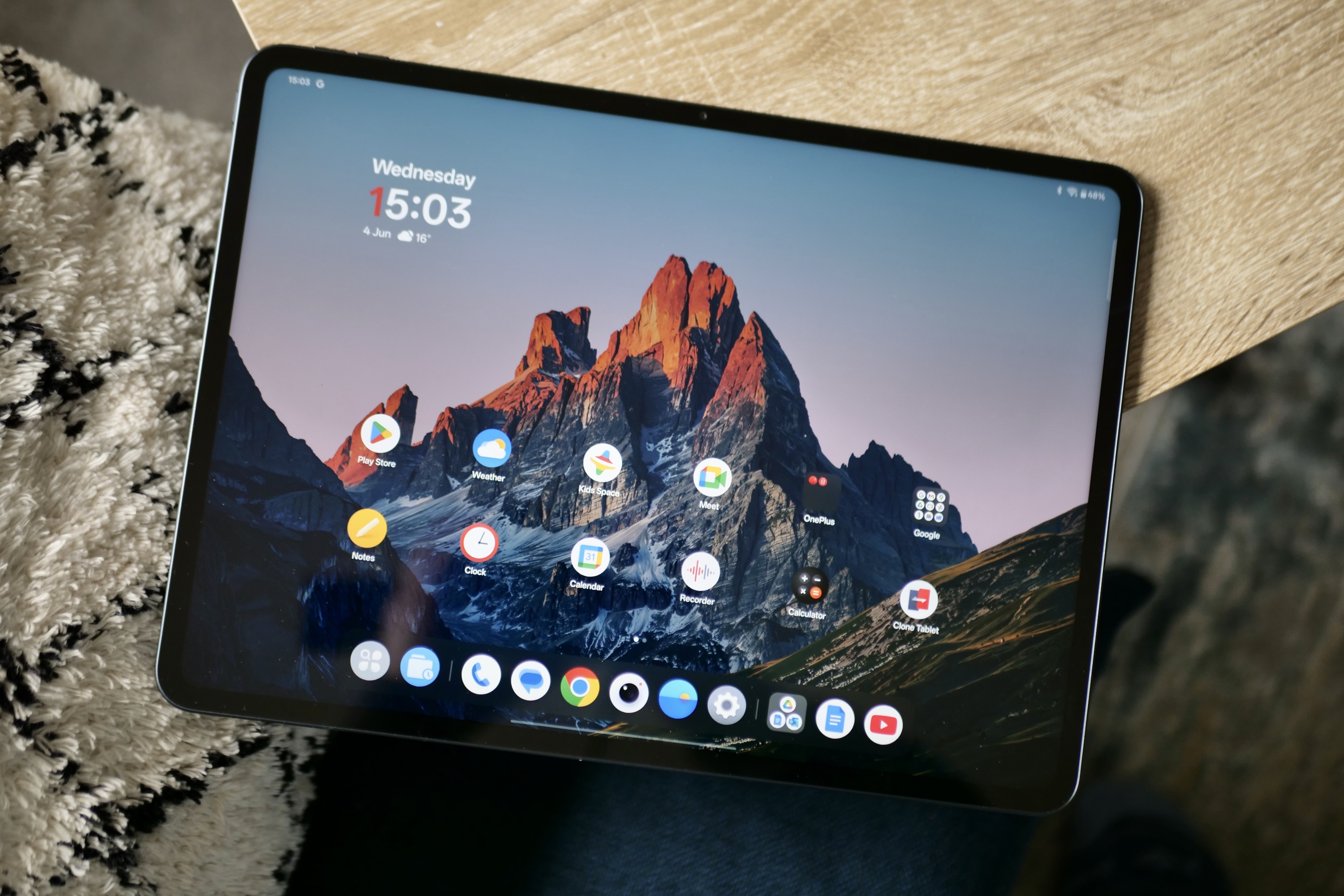 Close-up of the OnePlus Pad 3's vibrant 13.2-inch LCD screen displaying a colorful wallpaper.
Close-up of the OnePlus Pad 3's vibrant 13.2-inch LCD screen displaying a colorful wallpaper.
At maximum brightness, the screen remains easily legible outdoors in most conditions. I found the automatic refresh rate setting perfectly adequate, with the display smoothly transitioning up to a potential 144Hz in specific scenarios (like compatible games), though it typically settles at a fluid 120Hz. Beyond its susceptibility to fingerprints – a common trait among tablets – the screen is a definite highlight, and the choice of LCD over OLED hasn’t been a point of contention during my testing. Surrounding the chassis are eight speakers, with the tablet intelligently adjusting audio output based on screen orientation. While volume is plentiful, there’s a surprising deficiency in low-end bass, resulting in a somewhat harsh audio profile. Both the iPad Air and even my MacBook Air deliver a fuller, more pleasing sound. The OnePlus Pad 3’s speakers aren’t subpar, but the audio experience doesn’t quite live up to the promise of its eight-speaker array.
 OnePlus Pad 3 playing a high-resolution video, demonstrating its media consumption capabilities.
OnePlus Pad 3 playing a high-resolution video, demonstrating its media consumption capabilities.
Performance and Gaming on the OnePlus Pad 3
Under the hood, the OnePlus Pad 3 is powered by the Qualcomm Snapdragon 8 Elite, the same high-performance chipset found in many of today’s flagship smartphones, such as those featured in our [internal_link to Snapdragon 8 Elite tech page or relevant phone reviews]. This processor ensures more than enough capability to handle everyday tasks, demanding applications, and any game you throw at it. The OnePlus Pad 3 incorporates an effective cooling system; the rear panel only becomes noticeably warm during intensive gaming sessions or when running demanding benchmark stress tests like 3DMark. Multitasking is generally smooth, and app launches are swift, making for a responsive user experience.
Security Features and Camera Capabilities
A notable omission on the OnePlus Pad 3 is a fingerprint sensor for biometric security. Instead, users rely on standard lock screen methods like PIN or pattern, alongside a face unlock feature. While the face unlock is generally accurate, its convenience on a tablet is debatable. It requires you to align your face with the camera, which isn’t always practical given how tablets are often picked up and held. The camera is positioned on the side bezel (in portrait orientation) and can be inadvertently covered by your hand.
 Front view of the OnePlus Pad 3 highlighting its bezels and front-facing camera used for face unlock.
Front view of the OnePlus Pad 3 highlighting its bezels and front-facing camera used for face unlock.
This is where a fingerprint sensor often proves more intuitive, as users typically develop muscle memory for the power button’s location. This was my experience with the iPad Air and the Samsung Galaxy Tab S10 FE. With the OnePlus Pad 3, the adjustment period is longer, and I still find myself consciously maneuvering the tablet for the camera to register my face. The front camera is a basic 8-megapixel unit, primarily for face unlock and video calls. On the rear, there’s a single 13MP camera. While no one expects tablets to be primary photography tools, the camera app includes a variety of filters (similar to those on the [internal_link to OnePlus 13 review]), a Night mode, and the ability to capture 2x digital zoom photos.
Productivity: Keyboard and Software Insights (OxygenOS 15)
The optional keyboard accessory significantly enhances the OnePlus Pad 3’s utility for work, offering satisfying key travel and tactile feedback that allows for a quick typing speed. However, it lacks a backlight, which can be a drawback in dimly lit environments. The large trackpad’s cursor speed needs immediate adjustment out of the box, as it’s overly sensitive by default. The keyboard’s clickiness can lend it a slightly hollow feel, but it provides definite confirmation of key presses.
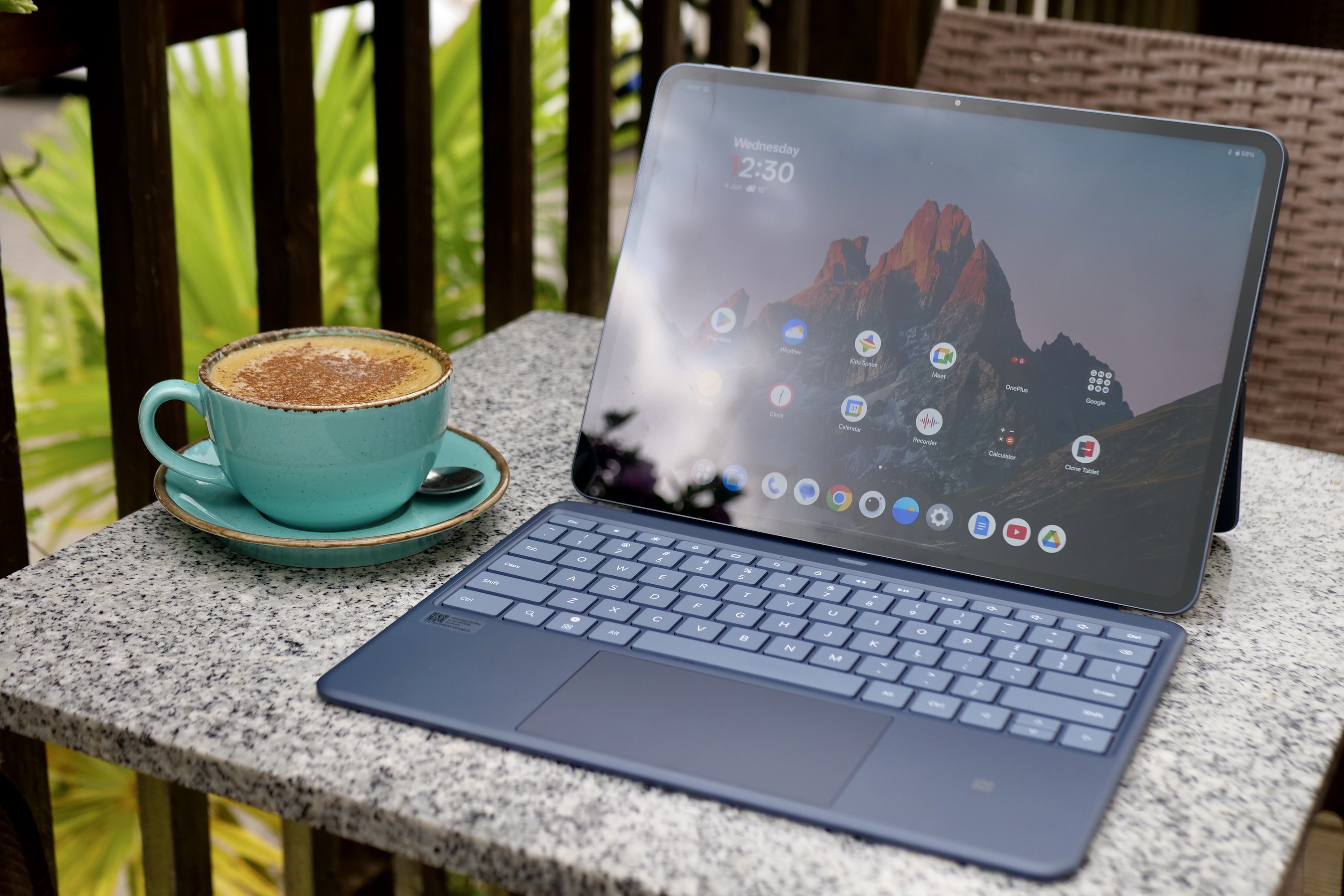 OnePlus Pad 3 attached to its official keyboard accessory, set up for productivity tasks.
OnePlus Pad 3 attached to its official keyboard accessory, set up for productivity tasks.
I composed most of this review using the OnePlus Pad 3 and its keyboard, primarily working within Google Docs. This provided an excellent opportunity to test the Split Screen mode, which is intuitive and logical to activate. The Open Canvas mode further expands multitasking by allowing a third app in view, with smooth and satisfying swipes between them. These features significantly boost the OnePlus Pad 3’s versatility for productivity. The keyboard connects via pogo pins and is secured by a magnetic kickstand rear cover. When the kickstand is deployed, the keyboard’s only attachment point is the magnetic pogo pins, making it prone to accidental detachment. OnePlus promotes its O+ Connect system for seamless file sharing between the tablet and a Mac or PC. Despite several attempts, I was unable to establish a stable connection between the OnePlus Pad 3 and my Mac Mini; your mileage may vary, but don’t expect it to work flawlessly from the outset. The broader Android tablet experience, as discussed in our [internal_link to article on Android tablet software experience], remains inconsistent. While most apps function adequately, formatting issues are unfortunately still common, with on-screen keyboards obscuring buttons being a frequent frustration. For casual work, emails, and document editing, the OnePlus Pad 3 with its keyboard case is competent, but I wouldn’t rely on it for prolonged or complex tasks.
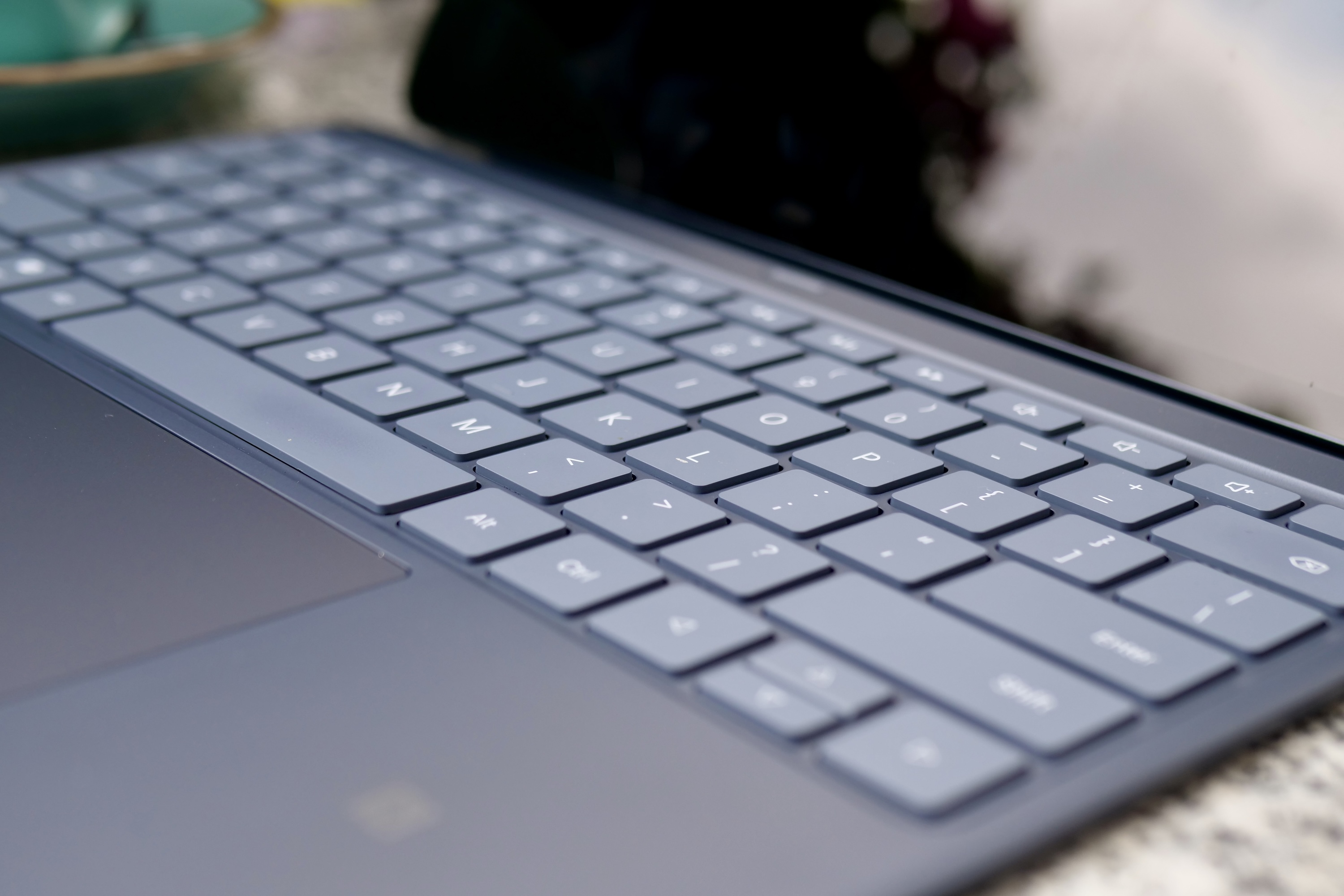 OnePlus Pad 3 screen showcasing the OxygenOS 15 interface and app layout for Android tablets.
OnePlus Pad 3 screen showcasing the OxygenOS 15 interface and app layout for Android tablets.
Battery Life and Charging Speeds
The substantial size of the OnePlus Pad 3 accommodates an equally substantial battery: a 12,140mAh cell, roughly double the capacity found in the [internal_link to OnePlus 13 review or specs page]. OnePlus claims this will provide up to 18 hours of video playback and an impressive standby time of at least 60 days, ensuring it’s ready for action even after extended periods of disuse.
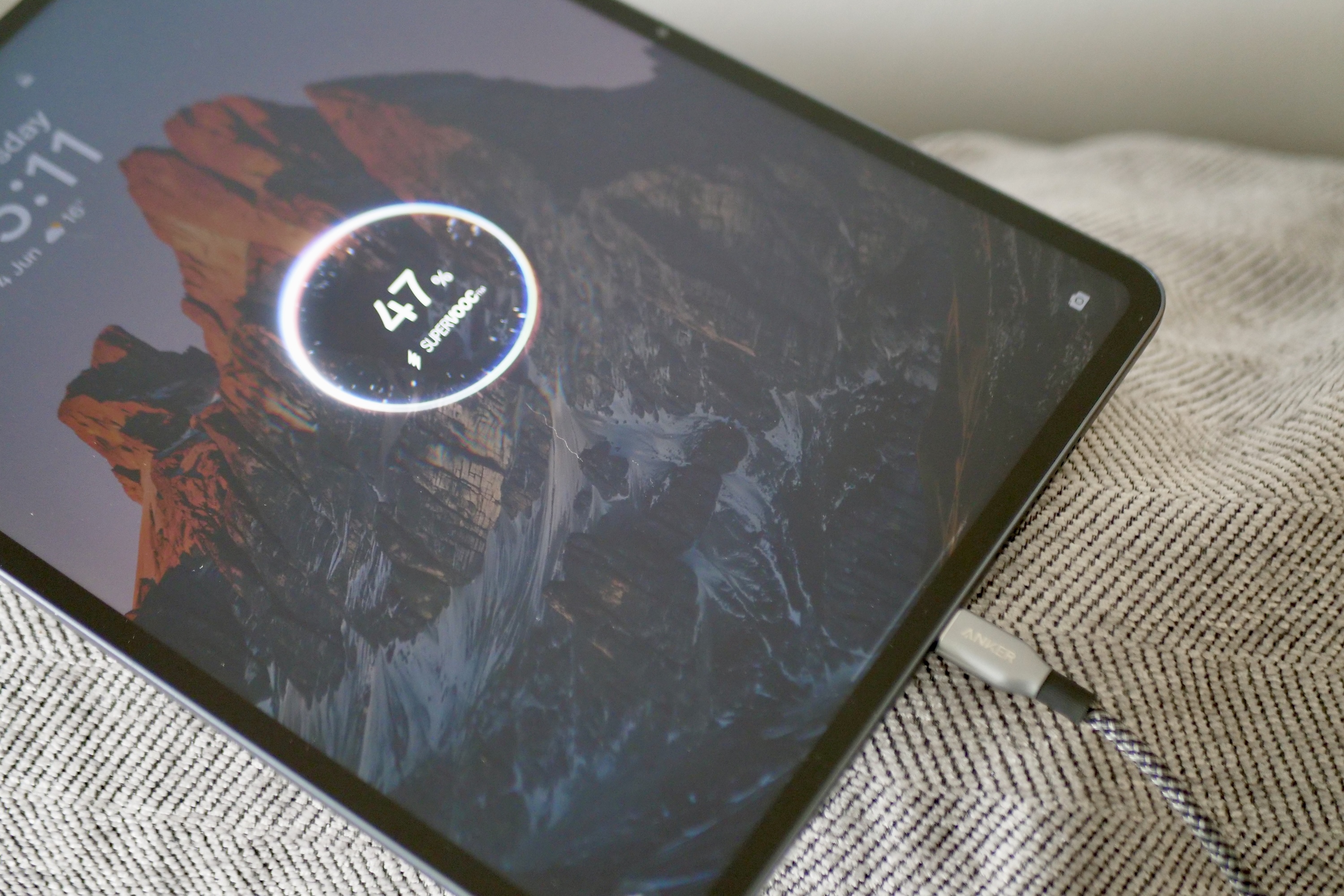 OnePlus Pad 3 connected to a USB-C charger, illustrating its 80W SuperVOOC fast charging capability.
OnePlus Pad 3 connected to a USB-C charger, illustrating its 80W SuperVOOC fast charging capability.
In my general usage, connected to Wi-Fi for video streaming and work tasks, the battery consistently lasted between three to four days on a single charge. The Snapdragon 8 Elite processor proves to be power-efficient; a 30-minute YouTube video consumed about 5% of the battery, while a 20-minute benchmarking stress test, simulating high-end gameplay, used 10%. The tablet recharges via a USB-C cable and supports OnePlus’s 80W SuperVOOC fast charging. Using an Anker Prime charging station, I was able to recharge it from empty to full in approximately 95 minutes, closely matching OnePlus’s estimate of 92 minutes. The combination of long battery life, extended standby, and rapid charging makes the OnePlus Pad 3 a very practical device.
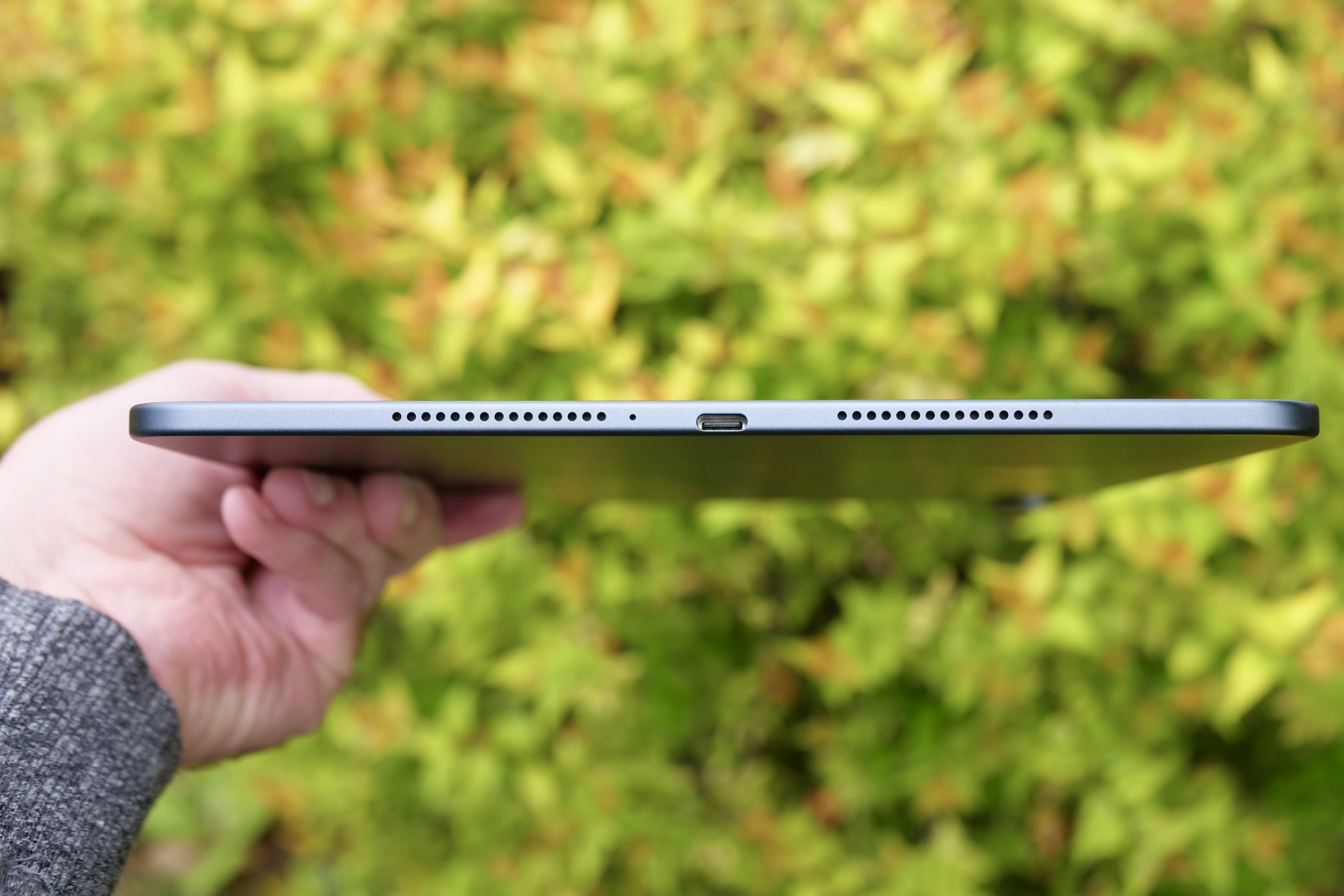 The OnePlus Pad 3 displaying its home screen, emphasizing its long-lasting battery for daily use.
The OnePlus Pad 3 displaying its home screen, emphasizing its long-lasting battery for daily use.
OnePlus Pad 3: Price, Availability, and Value Proposition
The OnePlus Pad 3 is priced at £529 for the 12GB RAM/256GB storage model, while the 16GB RAM/512GB storage version costs £699 in the UK. It’s important to note that the 12GB model features LPDDR5X RAM, whereas the 16GB variant is equipped with LPDDR5T RAM, which could offer slightly faster performance and improved power efficiency. This tablet showcases features like split-screen multitasking for enhanced productivity.
 OnePlus Pad 3 demonstrating its split-screen multitasking feature with two apps open side-by-side.
OnePlus Pad 3 demonstrating its split-screen multitasking feature with two apps open side-by-side.
Essential accessories are sold separately: the keyboard will set you back £169, and the stylus is priced at £99. The OnePlus Pad 3 is slated for availability from June 19th. The design includes compatibility with accessories like a magnetic kickstand, enhancing its versatility for different use cases, whether for media consumption or work.
 Rear view of the OnePlus Pad 3 with its magnetic kickstand cover, showing its design and accessory compatibility.
Rear view of the OnePlus Pad 3 with its magnetic kickstand cover, showing its design and accessory compatibility.
This pricing represents an increase compared to the OnePlus Pad 2, positioning the Pad 3 closer to the 11-inch [internal_link to iPad Air review], though still more affordable than Apple’s 13-inch equivalent. Its slim profile and large display are key physical attributes that define its presence in the tablet market.
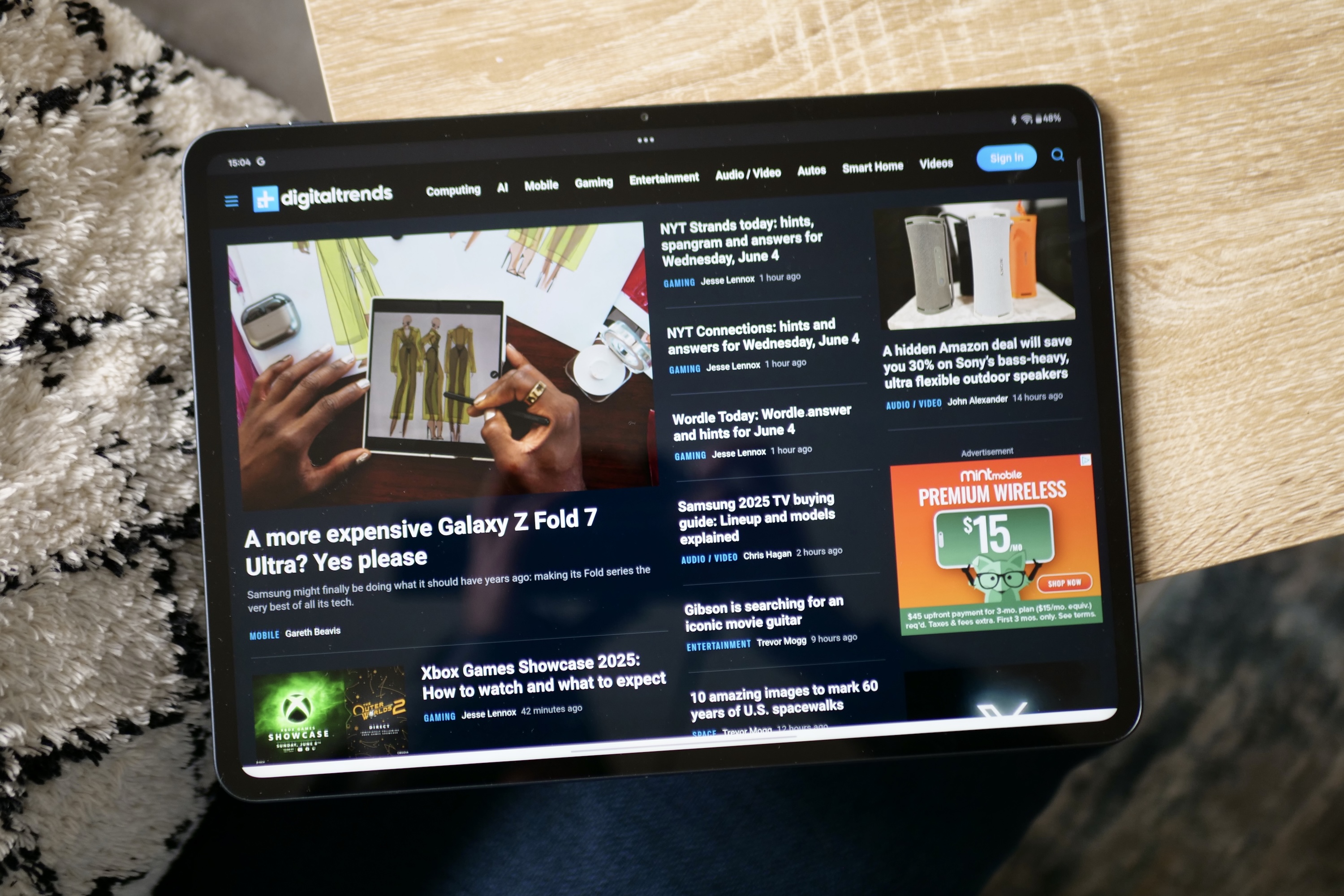 Angled view of the OnePlus Pad 3 showcasing its slim profile and large display.
Angled view of the OnePlus Pad 3 showcasing its slim profile and large display.
Interestingly, the OnePlus Pad 3 shares a price point with the [internal_link to Galaxy Tab S10 FE review], but boasts a significantly more impressive specification sheet. This comparison makes Samsung’s latest Fan Edition tablet appear to offer poorer value next to the OnePlus Pad 3, especially when considering its suitability for media viewing in landscape mode.
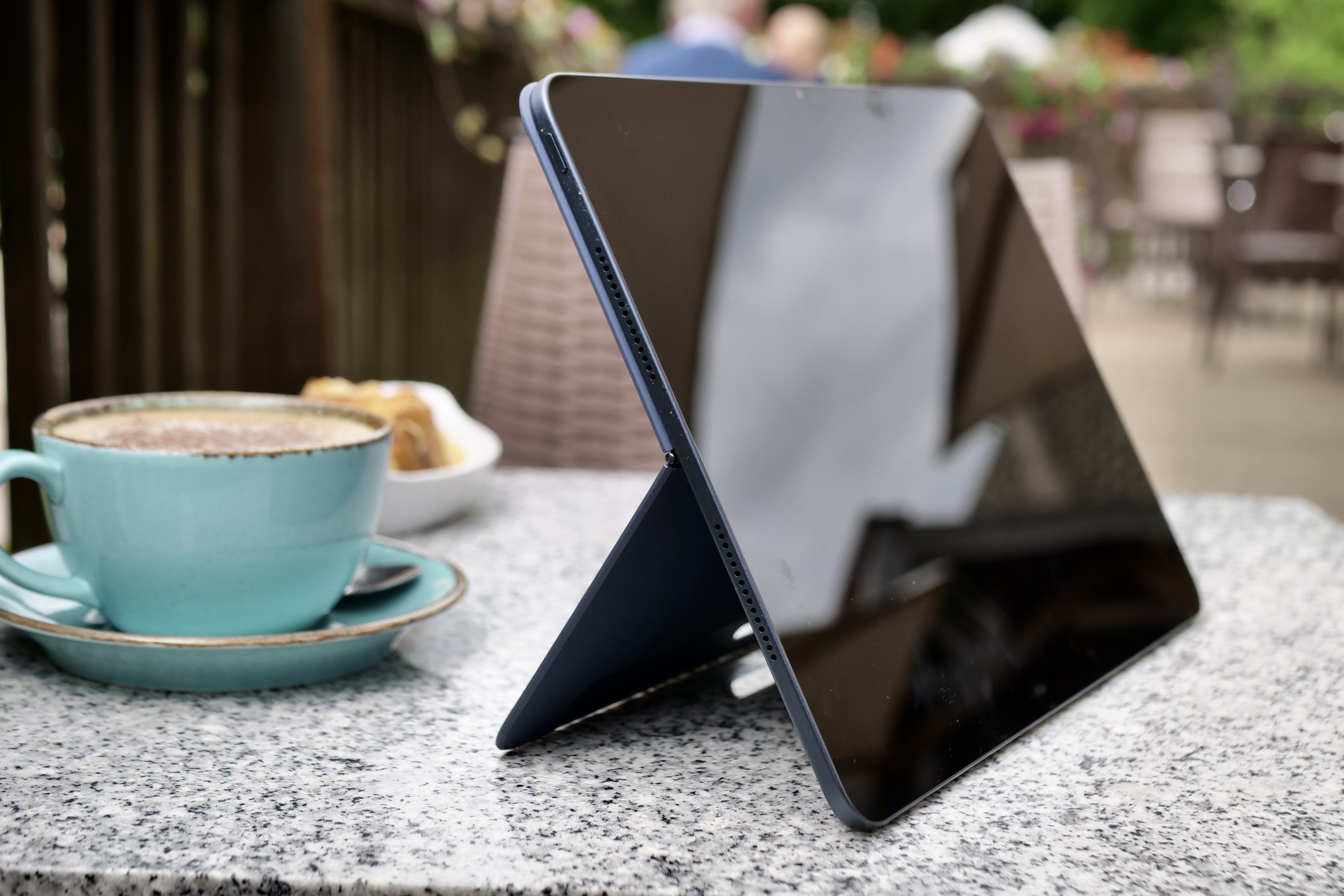 The OnePlus Pad 3 in landscape orientation, suitable for media viewing and productivity.
The OnePlus Pad 3 in landscape orientation, suitable for media viewing and productivity.
The expansive screen real estate is a defining characteristic, appealing to users who prioritize display size for their applications and media consumption habits. When evaluating its overall market standing, these factors play a crucial role in determining its appeal against established competitors.
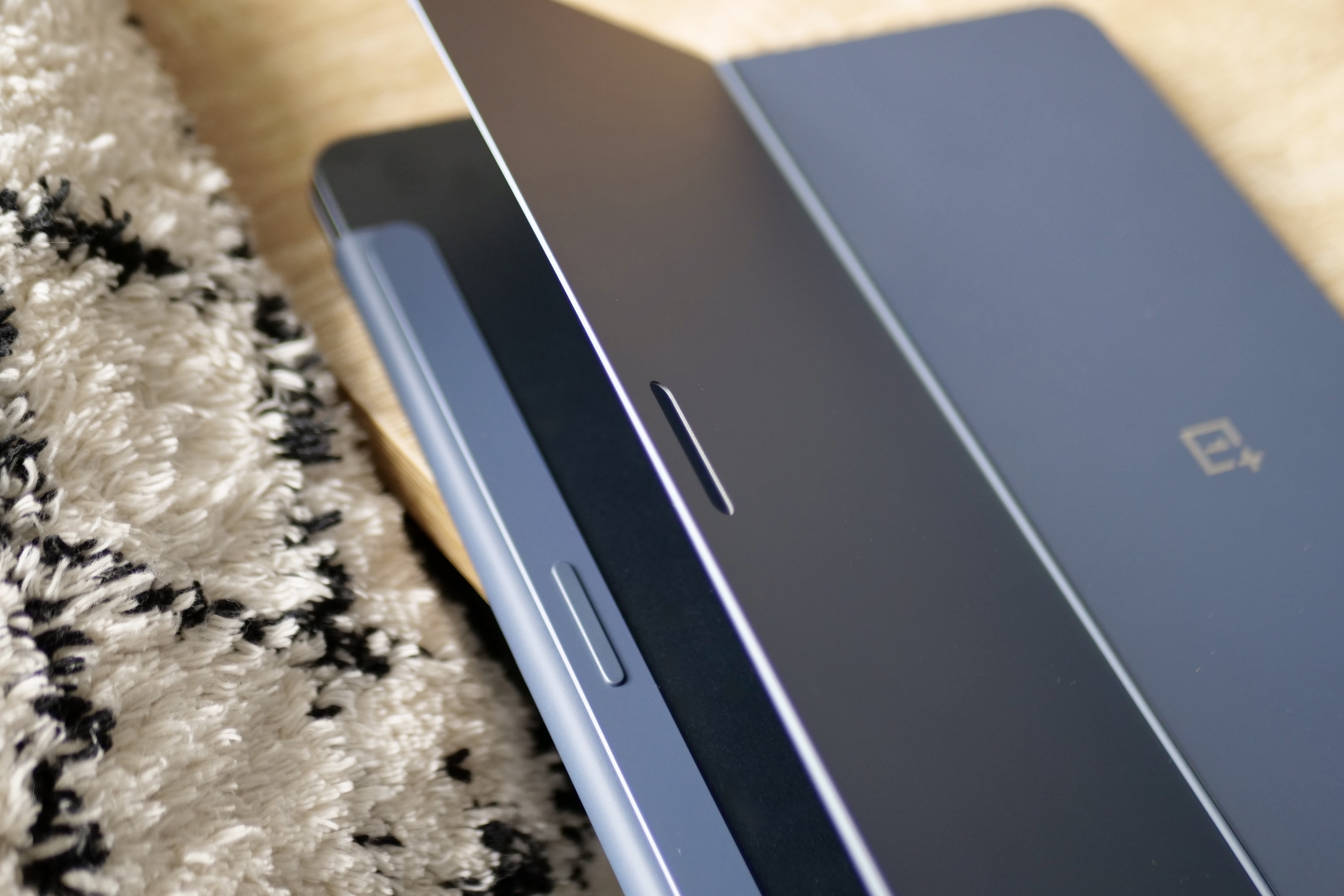 Front-on shot of the OnePlus Pad 3 highlighting its expansive screen real estate.
Front-on shot of the OnePlus Pad 3 highlighting its expansive screen real estate.
Our Verdict: Should You Buy the OnePlus Pad 3?
The OnePlus Pad 3’s immense screen transforms video consumption into a genuinely enjoyable experience, and even the slightly tinny speakers can’t entirely detract from this. Its battery endurance is remarkable, whether in active use or on standby, and the optional keyboard provides a comfortable typing experience. OnePlus’s multitasking enhancements, running on OxygenOS 15 based on Android 15, effectively compensate for some of Android’s inherent limitations on larger screens. Furthermore, the company’s commitment to three years of software support ensures the tablet will remain current for a respectable period.
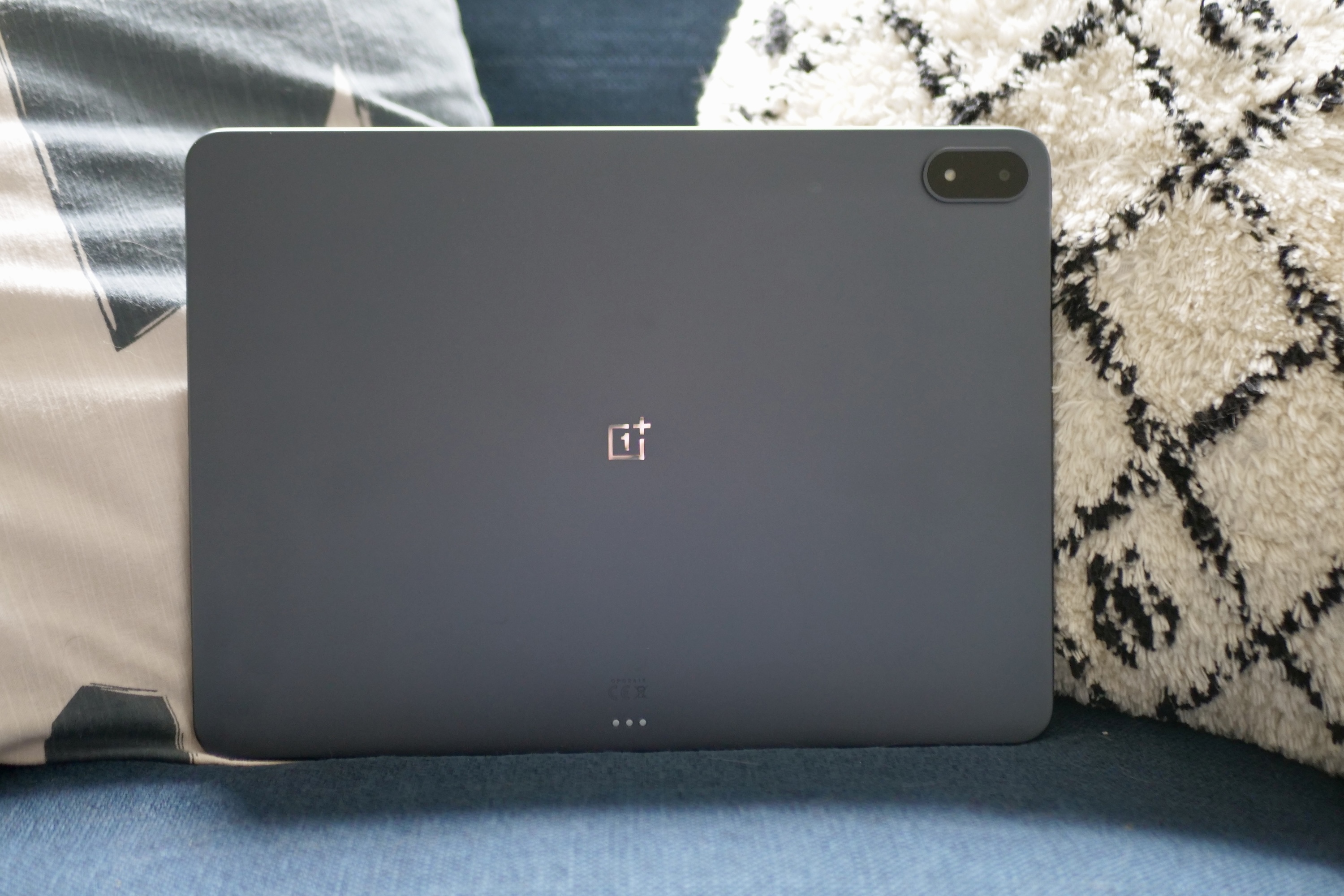 The sleek Storm Blue aluminum back panel of the OnePlus Pad 3, reflecting its premium build.
The sleek Storm Blue aluminum back panel of the OnePlus Pad 3, reflecting its premium build.
However, its sheer size renders it somewhat cumbersome for comfortable use outside the home; an 11-inch tablet offers far greater versatility for on-the-go scenarios. The price also places it in direct contention with the excellent 11-inch [internal_link to iPad Air review]. Depending on your intended use, sheer size might not be the compelling selling point OnePlus positions it as. Nevertheless, when pitted against the [internal_link to Galaxy Tab S10 FE review], the OnePlus Pad 3 emerges as a significantly better value proposition. We recommend the OnePlus Pad 3 as a solid [internal_link to best Android tablets list]; it’s a powerful and long-lasting device. However, it’s not particularly revolutionary, and despite its impressive dimensions and power, it doesn’t dramatically advance the Android tablet landscape. This isn’t a criticism, but rather an effort to set realistic expectations for potential buyers.



